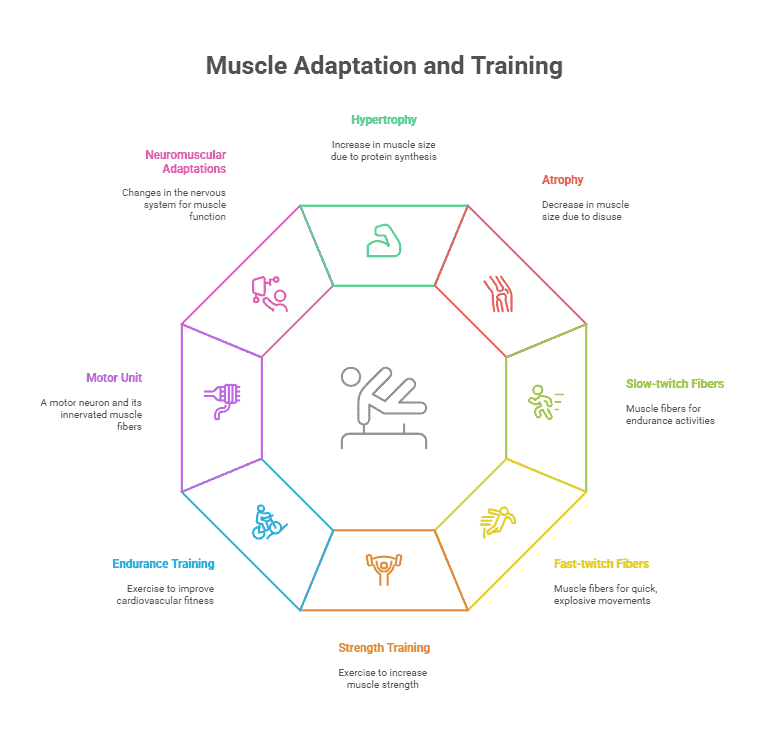Exercise is essential for maintaining overall health and fitness. When we engage in regular physical activity, our muscles undergo a series of adaptations to meet the demands placed upon them. These adaptations occur at the cellular level and are crucial for improving strength, endurance, and overall performance.
Types of Muscle Adaptations
One of the primary adaptations that occur in response to exercise is an increase in muscle size, known as hypertrophy. This is the result of an increase in the size of individual muscle fibers due to an increase in the number of myofibrils and myofilaments within the muscle cells.
Another important adaptation is an increase in muscle strength. This is achieved through a process called neural adaptation, which involves the recruitment of more motor units and an improvement in the synchronization of muscle contractions.
Additionally, regular exercise can lead to an increase in muscle endurance. This is due to an increase in the number and size of mitochondria within the muscle cells, which are responsible for producing energy through aerobic metabolism.
Factors Influencing Muscle Adaptations
Several factors can influence the extent and rate of muscle adaptations to exercise. These include the type of exercise performed, the intensity and duration of the exercise, as well as the frequency of training sessions.
Genetics also play a role in determining an individual’s response to exercise. Some people may experience greater muscle growth and strength gains compared to others due to their genetic makeup.
Benefits of Muscle Adaptations
The adaptations that occur in response to exercise have numerous benefits for overall health and well-being. Improved muscle strength and endurance can enhance athletic performance and reduce the risk of injury during physical activity.
Furthermore, increased muscle mass can help boost metabolism and aid in weight management. Regular exercise can also improve overall quality of life by reducing the risk of chronic diseases such as heart disease, diabetes, and osteoporosis.
Summary
Exercise triggers a series of adaptations in the muscles, including hypertrophy, increased strength, and enhanced endurance. These adaptations are influenced by factors such as the type and intensity of exercise, as well as genetic predisposition. The benefits of muscle adaptations to exercise include improved athletic performance, weight management, and overall health.
Key Takeaways:
- Muscles can adapt to exercise by increasing in size and strength
- Resistance training can lead to hypertrophy of muscle fibers
- Aerobic exercise can improve the endurance and efficiency of muscles
- Regular exercise can increase the number of capillaries surrounding muscle fibers
- Muscle adaptations to exercise can improve overall performance and prevent injury
Key Terms:
- Muscle Adaptations to Exercise: Changes that occur in muscles in response to physical activity or exercise.
- Hypertrophy: Increase in muscle size due to increased protein synthesis and muscle fiber size.
- Atrophy: Decrease in muscle size due to disuse or lack of physical activity.
- Slow-twitch Muscle Fibers: Muscle fibers that are designed for endurance activities and have a high resistance to fatigue.
- Fast-twitch Muscle Fibers: Muscle fibers that are designed for quick, explosive movements and have a lower resistance to fatigue.
- Strength Training: Type of exercise that focuses on increasing muscle strength through resistance training.
- Endurance Training: Type of exercise that focuses on improving cardiovascular fitness and muscle endurance.
- Motor Unit: A motor neuron and all the muscle fibers it innervates.
- Neuromuscular Adaptations: Changes in the nervous system that improve muscle function and performance.
